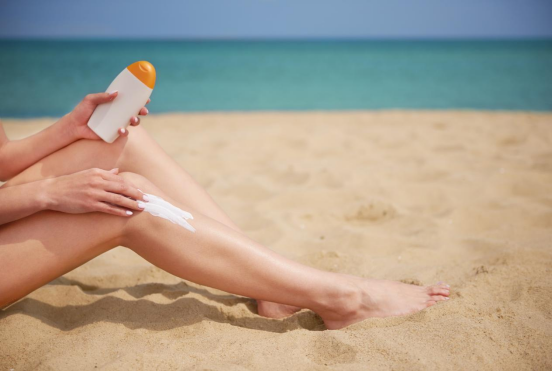
As consumers come to be progressively wise regarding skin care, the argument in between chemical and physical sunscreens remains to be a warm topic. While both offer essential protection versus the sunlight's dangerous ultraviolet (UV) rays, physical sunscreens are commonly admired for their gentle yet efficient solution, making them a preferred choice for those with sensitive or responsive skin. The key to their success lies in their active ingredients, which produce a physical obstacle on the skin to block out UV radiation. This short article will explore the globe of physical sun blocks, concentrating on their key components: zinc oxide and titanium dioxide.
Unlike their chemical equivalents, which absorb UV radiation and convert it into heat, physical sunscreens work by sitting on top of the skin to form a guard that disperses and spreads both UVA and UVB rays. This mechanism is why they are often described as "sunscreens." The main advantage of this method is its prompt performance upon application and the reduced chance of creating skin inflammation, as the components are not soaked up right into the skin.
One of the most renowned component in the physical sunscreen family members is Zinc Oxide. This giant mineral is special in its ability to give broad-spectrum security, implying it effectively protects the skin against the complete spectrum of UVA and UVB rays. UVA rays are accountable for premature aging, consisting of wrinkles and great lines, while UVB rays are the main cause of sunburn. By supplying detailed protection versus both, zinc oxide plays an essential duty in stopping sun damage and lowering the danger of skin cancer cells.
Additionally, zinc oxide is renowned for its relaxing buildings. It has been made use of for centuries to deal with minor skin inflammations, breakouts, and burns, a testimony to its gentle nature. This makes sunscreens created with zinc oxide a perfect option for individuals with delicate skin, acne-prone skin, or problems like rosacea and dermatitis. Its non-comedogenic homes additionally suggest it is much less likely to clog pores, a common worry for those with oily or mix skin.
The various other principal in the physical sunscreen classification is Titanium Dioxide. This naturally taking place mineral is an additional excellent ingredient for creating a physical obstacle against UV rays. It is highly reliable at mirroring and spreading UVB radiation, giving durable defense versus sunburn. While it uses great security across the UVB spectrum, it is typically considered less effective against long-wave UVA rays contrasted to zinc oxide.
Consequently, titanium dioxide is often made use of in conjunction with zinc oxide in sun block solutions. This mix produces a collaborating impact, improving the overall broad-spectrum protection of the item. By leveraging the staminas of both ingredients, formulators can develop a sunscreen that offers thorough and reliable protection versus the sun's destructive rays. Like zinc oxide, titanium dioxide is likewise mild on the skin and is an appropriate alternative for those with sensitive or conveniently aggravated skin.
Over the last few years, developments in solution technology have actually addressed one of the first drawbacks of physical sunscreens: the thick, white actors they would typically leave on the skin. Modern solutions now physical sunscreen ingredients utilize micronized or nano-sized bits of zinc oxide and titanium dioxide, which permits a more cosmetically sophisticated application without endangering their safety capabilities. This means you can take pleasure in the mild, effective protection of a physical sunscreen without the telltale white residue.
To conclude, physical sunscreens use a dependable and gentle method to protect your skin from the sunlight. Their celebrity components, zinc oxide and titanium dioxide, work in harmony to create a physical shield that disperses hazardous UVA and UVB rays. With their outstanding security profile and viability for all skin kinds, specifically delicate skin, physical sunscreens are a powerful force in the fight against sunlight damages. The next time you are Browse the sunscreen aisle, consider the powerful, protective, and skin-loving benefits of a physical formulation.
Comments on “The Power of Physical Sunscreen: A Deep Dive into Its Star Contents”